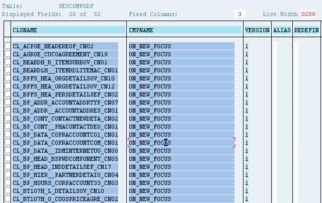Fabric Safety Checklist for Global Trade
: Fabric Safety Checklist for Global Trade,Abstract: This paper presents a comprehensive checklist for the safety of fabrics during global trade. The checklist covers various aspects, including quality control measures, environmental regulations, and legal compliance requirements. It provides practical guidance for textile manufacturers and traders to ensure that their fabric products meet international standards and avoid potential risks associated with unsafe fabrics. The checklist is essential for preventing product recalls, legal penalties, and damage to brand reputation. By following this checklist, businesses can enhance their competitiveness in the global market and protect their customers' interests.
Introduction: In today's globalized market, the textile industry is one of the most dynamic sectors, with a vast array of materials, products, and processes. However, this diversity also poses significant risks to safety, especially when it comes to the import and export of raw materials and finished goods. This guide aims to provide a comprehensive checklist for ensuring the safety of textile products during international trade.
Checklist:
-
Raw Materials
- Labeling: Ensure that all raw materials are clearly labeled with their origin, composition, and any relevant certifications or standards.
- Inspection: Perform regular inspections to ensure that the raw materials meet quality standards and do not contain harmful substances.
- Storage: Secure storage facilities to prevent contamination from external sources.
-
Production Processes

- Safety Training: Employees should undergo regular training on safety procedures and emergency response measures.
- Equipment Maintenance: Regularly inspect and maintain machinery to avoid accidents caused by malfunctioning equipment.
- Labor Standards: Enforce labor laws and regulations to protect workers from hazards and ensure they receive proper compensation.
-
Packaging
- Sealability: Ensure that packaging is airtight and watertight to prevent leaks and contamination.
- Labeling: Use clear labels to indicate contents, warnings, and handling instructions.
- Customs Compliance: Follow customs regulations to prevent customs disputes and fines.
-
Export and Import Regulations
- Certifications: Obtain necessary certifications such as SGS, BSCI, or similar to demonstrate compliance with international standards.
- Duties and Taxes: Be aware of applicable tariffs, duties, and other taxes to avoid unnecessary costs.
- Customs Clearance: Work closely with customs officials to ensure smooth clearance procedures.
-
Documentation
- Contractual Agreements: Document all agreements between buyers and sellers to avoid misunderstandings and disputes.
- Shipping Records: Keep detailed records of shipping documents, including customs declarations, invoices, and receipts.
- Quality Control Records: Maintain records of quality control inspections to demonstrate product conformity to standards.
-
Emergency Response Plan
- First Aid Kit: Ensure that all employees are trained in basic first aid and have access to an emergency kit.
- Emergency Contact Information: Keep emergency contact information readily available for staff and customers.
- Communication Channels: Establish effective communication channels to respond quickly to emergencies.
Example Case Study: In 2019, a major textile company experienced a severe fire outbreak at its factory due to improper electrical wiring. The incident resulted in injuries and damage to the factory infrastructure. The company promptly implemented the above checklist, including stricter safety regulations, regular inspections, and training for all employees. Thanks to these measures, the company was able to minimize losses and resume normal operations within a short period. This case highlights the importance of a comprehensive safety checklist in preventing accidents and minimizing risks.
Conclusion: Implementing a comprehensive fabric safety checklist can significantly enhance the safety and reliability of textile products during international trade. By following the guidelines outlined above, businesses can reduce the risk of accidents, comply with regulations, and build trust with customers and regulatory bodies. Remember, safety is not just about preventing accidents but also about maintaining a healthy work environment and protecting the health and well-being of all stakeholders involved in the textile industry.
纺织品市场安全检查的重要性
在纺织品市场中,安全检查是一项至关重要的工作,旨在确保市场上的纺织品质量符合相关标准和法规,通过安全检查,可以防止不合格的纺织品流入市场,保障消费者的权益和安全,这也是维护市场秩序、保障市场公平竞争的重要手段。
纺织品市场安全检查的主要内容
纺织品市场安全检查主要包括以下几个方面:
- 产品质量检查:检查纺织品的主要性能指标是否符合国家标准和行业标准。
- 环保标准检查:检查纺织品是否符合环保要求,是否存在有害物质超标等问题。
- 安全性能检查:检查纺织品在使用过程中是否具备安全性,是否存在安全隐患。
- 法律法规遵守情况检查:检查纺织品生产、销售等环节是否遵守相关法律法规。
案例分析
以某地区纺织品市场为例,近年来,该市场在纺织品安全检查方面取得了显著成效,以下是一个案例分析:
严格把控产品质量
该地区一家知名的纺织品生产企业,近年来在产品质量安全方面投入了大量精力,他们通过建立严格的质量控制体系,对原材料进行严格把关,确保每批次的纺织品都符合国家标准和行业标准,他们还加强了对生产过程的监管,确保生产过程中的每一个环节都符合安全要求,该企业生产的纺织品质量得到了广大消费者的认可和好评。
重视环保标准与安全性能
在该地区另一个纺织品市场中,一些商家开始更加注重环保标准与安全性能,他们采购环保材料,减少有害物质的产生和排放,他们还加强了对产品的检测和评估,确保产品在使用过程中具备安全性,他们还积极推广绿色生产理念,推动行业绿色发展,该市场上的纺织品质量得到了广大消费者的信任和好评。
安全检查的具体步骤和方法

在纺织品市场安全检查中,一般包括以下几个步骤和方法:
制定安全检查计划
根据市场需求和行业特点,制定详细的纺织品市场安全检查计划,包括检查的时间、地点、对象、内容等。
进行现场检查
对市场上的纺织品进行现场检查,包括查看生产环节、销售环节等各个环节的情况,对相关人员进行询问和调查,了解他们的安全生产意识和能力。
进行检测和评估
对纺织品进行检测和评估,包括检测其性能指标、环保标准、安全性能等方面的情况,对检测结果进行公示和反馈,让消费者了解检测结果。
提高纺织品市场安全检查效果的措施和建议
为了提高纺织品市场安全检查效果,可以采取以下措施和建议:
加强宣传教育
通过各种渠道加强对纺织品安全知识的宣传教育,提高消费者的安全生产意识和能力,加强对相关人员的培训和教育,提高他们的安全生产意识和能力。
建立完善的质量控制体系
建立完善的质量控制体系,对原材料进行严格把关,确保每批次的纺织品都符合国家标准和行业标准,加强生产过程的监管和控制,确保生产过程中的每一个环节都符合安全要求。
加强环保标准的执行力度
加强环保标准的执行力度,推动行业绿色发展,加强对环保材料的采购和使用情况的监督和管理,确保产品符合环保要求。
总结与展望
纺织品市场安全检查是保障消费者权益和安全的重要手段,通过加强宣传教育、建立完善的质量控制体系、加强环保标准的执行力度等措施,可以提高纺织品市场安全检查效果,随着纺织行业的发展和消费者需求的不断变化,纺织品市场安全检查工作将会更加重要和复杂。
Articles related to the knowledge points of this article:
The Art of Refining Textiles:A Comprehensive Guide to Quality Correction
The Branded Textiles and Integrity Service in Lucheng District



